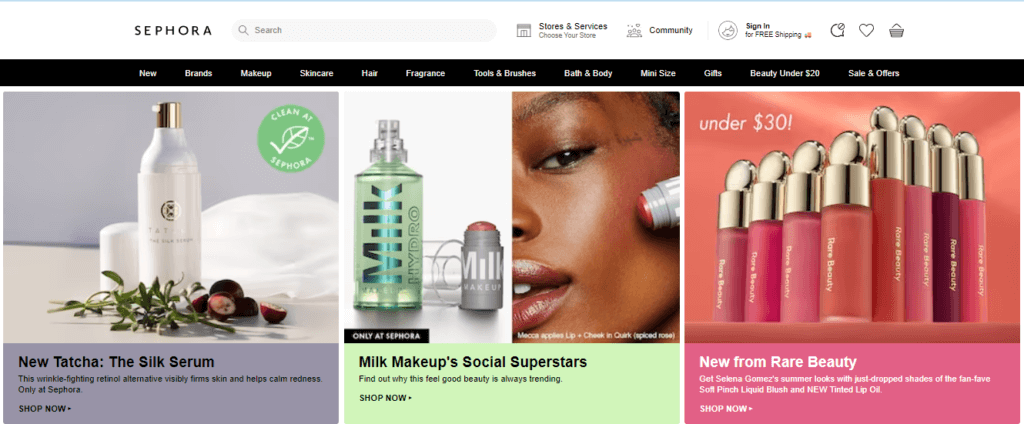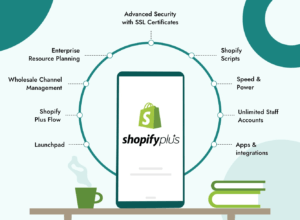Stepping into the world of eCommerce, you’ll find that the buzzword ‘omnichannel marketing’ is making waves. But what is it exactly? Omnichannel marketing is about knitting together all channels – online and offline – to provide a unified and seamless customer experience. It’s more than just being on multiple platforms; it’s about these platforms working in harmony throughout the customer’s buying journey.
And why is this crucial in eCommerce? In today’s digital age, shoppers flit between various devices and platforms. They expect a consistent, personalized experience at every touchpoint.
An effective omnichannel marketing strategy can meet these expectations, ramping up customer engagement and driving sales. In short, for eCommerce success, omnichannel marketing isn’t just nice to have – it’s a must-have.
The Rise of Omnichannel Marketing in eCommerce
The transformation we’re seeing in eCommerce is fundamentally a reflection of the evolving consumer landscape. In the past, shopping was typically a single-channel experience. You’d head to your local store, browse the goods on offer, and make a purchase.
But the advent of the digital age has completely redefined this experience. Now, consumers are in the driver’s seat, navigating their purchasing journey across various channels.
This is what a user journey on your e-commerce store might look like:
- Users might stumble upon a product while scrolling through their social media feed
- They read reviews on a third-party site
- They compare prices on different online stores
- Finally, make the purchase either online or at a physical store
In many cases, there would be much more touchpoints than this.
In the midst of this intricate web of touchpoints, omnichannel marketing emerges as the glue that holds the entire customer journey together.
It’s the art and science of delivering a consistent and seamless shopping experience, irrespective of where the customer chooses to engage with your brand. It goes beyond simply having a presence on multiple channels; it’s about ensuring that these channels work together in harmony.
Imagine a customer browsing through products on your mobile app, adding a few to their cart, but choosing to complete the purchase later.
When they log in to your website from their laptop, their cart items are waiting for them, ready to be checked out. Later, they receive personalized recommendations based on their purchase.
That’s the power of omnichannel marketing. It not only connects the dots along the customer journey but also personalizes the shopping experience, making customers feel valued and understood.
And that’s the crux of it – the modern consumer expects this seamless, personalized experience. They want the flexibility to switch between channels and still receive the same level of service and personalization.
Brands that leverage omnichannel marketing to meet these expectations are the ones that stand out in the crowded eCommerce space. They’re the ones that are shaping the future of shopping, where the lines between online and offline are blurred, and the focus is solely on delivering exceptional customer experiences.
Key Components of a Successful Omnichannel Marketing Strategy
Crafting an effective omnichannel marketing strategy requires an in-depth understanding of your customers, a consistent brand message, and personalized touchpoints. Here’s how to get started:
Customer Journey Mapping
Your omnichannel strategy should begin with a clear map of your customers’ journey. From the initial point of contact to the final purchase and beyond, each touchpoint should be meticulously plotted. This gives you a clear picture of your customers’ interactions with your brand, allowing you to identify opportunities for engagement.
Example: For instance, Apple, a leading player in the tech industry, is known for its seamless customer journey. Whether it’s their website, mobile app, physical stores, or customer support, the transition between touchpoints is practically invisible.
Consistent Branding Across All Channels
In omnichannel marketing, consistency is key. Regardless of the platform or channel, your branding should remain the same. This includes everything from your logo and color scheme to your messaging and customer service.
Example: Take Nike for example. They’ve established a powerful and recognizable brand, and they maintain this image consistently across their website, social media platforms, and physical stores. This consistency builds trust and fosters a sense of familiarity among customers.
Personalized Customer Experiences
Personalization goes hand in hand with omnichannel marketing. By leveraging customer data, you can deliver personalized content, recommendations, and offers that resonate with your customers. Sephora, the global beauty retailer, excels in this area. Through their Beauty Insider program, they offer tailored product recommendations and rewards, enhancing the customer experience both online and in-store.
The bottom line is, a successful omnichannel strategy isn’t just about being present on multiple channels. It’s about creating a seamless, consistent, and personalized experience that puts the customer at the heart of your business.
Implementing Omnichannel Marketing in Your eCommerce Business
Creating a successful omnichannel presence for your eCommerce business is a multi-faceted task. Let’s break it down into manageable steps:
- Step 1: you need to integrate all your marketing channels. The idea is to ensure a seamless and consistent experience, no matter where our customers interact with us. Be it on social media, our website, email, or even in a physical store, we should be singing the same tune. A customer adding an item to their cart on the mobile app should be able to find the same item waiting when they switch to the desktop site.
- Step 2: we turn to the power of personalization, which is the secret sauce of effective omnichannel marketing. By analyzing and understanding our customers’ data – previous purchases, browsing habits, feedback – we can tailor our interactions to resonate with each individual. Imagine a customer who’s just purchased running shoes from your site, and they receive a personalized recommendation for running apparel. That’s the kind of targeted approach we’re aiming for.
- Step 3: if your business operates both online and offline, we must ensure a smooth transition between these two worlds. Features like ‘buy online, pick up in-store’, or allowing in-store returns for online purchases, can enhance the overall customer experience. Look at brands like Warby Parker or Bonobos – they’ve perfected the art of blending online and offline shopping experiences.
At its core, implementing omnichannel marketing in your eCommerce business means crafting a seamless, personalized customer journey across all touchpoints. It’s about putting our customers first, ensuring they enjoy a unified brand experience, no matter how or where they interact with us.
Brands With Effective Omnichannel Strategies
Every successful journey is worth sharing, and the world of omnichannel eCommerce is no different. Let’s take a moment to admire some trailblazers who’ve nailed their omnichannel strategies.
Sephora

Sephora’s Beauty Bag feature allows customers to add products to their virtual “bag” via the Sephora app, website, or in-store. Any changes made sync across all platforms, ensuring a cohesive shopping experience. Plus, their Beauty Insider rewards program integrates online and in-store purchases, offering a truly omnichannel loyalty experience.
Disney

Disney has created a seamless omnichannel experience starting from their attractive, easy-to-navigate website. Tickets booked online are loaded onto a MagicBand bracelet, which serves as a hotel room key, photo storage device, and food ordering tool at the park. This level of integration delivers an immersive and frictionless customer experience.
Amazon

And who can forget about Amazon and their venture into the physical world with Amazon Go stores? The ‘Just Walk Out’ technology blends the online and offline worlds, allowing customers to shop without queues or checkout processes.
These brands have not just talked the talk; they’ve walked the omnichannel walk. They’ve shown how a well-executed omnichannel strategy can lead to deeper customer engagement, increased loyalty, and ultimately, more sales. Their successes should serve as a beacon for any eCommerce business looking to explore the world of omnichannel marketing.
Tracking Your Omnichannel Marketing Performance
Embarking on an omnichannel journey requires keeping your eyes on the road. That means tracking your performance, understanding what’s working, and where there’s room for improvement.
Start with the key metrics. Customer retention rate, purchase frequency, and average order value are just a few that can give you a clear picture of how your omnichannel efforts are paying off. The golden rule? The higher these numbers, the better your strategy is performing.
Here are the key metrics to monitor:
- Customer Retention Rate: This measures the number of customers who continue to do business with you over a given period. A high retention rate indicates a successful omnichannel strategy.
- Purchase Frequency: How often your customers are making purchases can tell you a lot about their loyalty and satisfaction with your brand.
- Average Order Value (AOV): This metric reflects the average amount spent each time a customer places an order. A higher AOV often signifies a successful cross-selling or up-selling strategy.
- Customer Satisfaction Score (CSAT): This directly reflects your customers’ happiness with your products and services.
- Net Promoter Score (NPS): NPS measures the willingness of your customers to recommend your brand to others. A high NPS indicates strong customer loyalty, which is the ultimate goal of any omnichannel strategy.
Remember, these numbers serve as your compass, guiding you to understand what’s working and where there’s room for improvement in your omnichannel strategy.
Then there are the tools. Google Analytics, for instance, is a treasure trove of data. It can show you where your traffic is coming from, what paths customers are taking through your site, and where they’re dropping off. Other tools like Adobe Analytics and Mixpanel provide deeper insights into user behavior across different platforms.
But remember, just having the data isn’t enough. It’s about interpreting it, learning from it, and using it to refine your approach. Notice a dip in customer retention? Maybe it’s time to revamp your loyalty program. Seeing a high bounce rate on your product pages? Perhaps your product descriptions need a refresh.
Like any good journey, your omnichannel marketing strategy will have twists and turns. But with the right tracking and a willingness to adapt, you can keep moving forward and help your eCommerce business thrive in this interconnected world.
Final Thoughts
By intelligently integrating various channels and delivering consistent, personalized experiences, you’re not just meeting your customers’ expectations—you’re exceeding them. And there’s no better path to sustainable business growth than happy, loyal customers.
Remember, though, that establishing a successful omnichannel strategy isn’t an overnight feat—it requires careful planning, continuous optimization, and a deep understanding of your customers. But you don’t have to go at it alone.
Here at Mapplinks, we’re passionate about helping businesses like yours navigate the intricacies of omnichannel marketing. With our experience and expertise, we can guide you towards creating an omnichannel strategy that drives results and propels your business towards unprecedented growth. Contact us and let’s start this exciting journey towards omnichannel success together!


